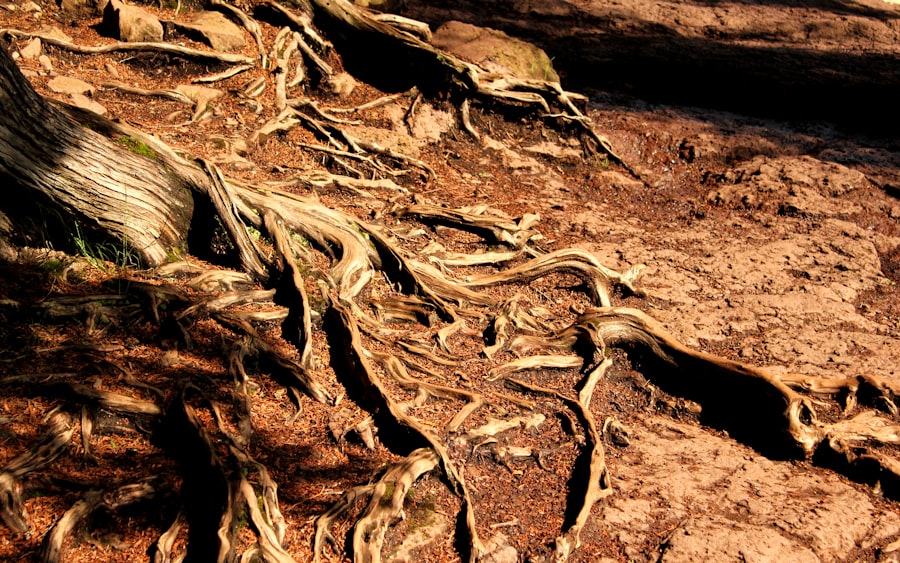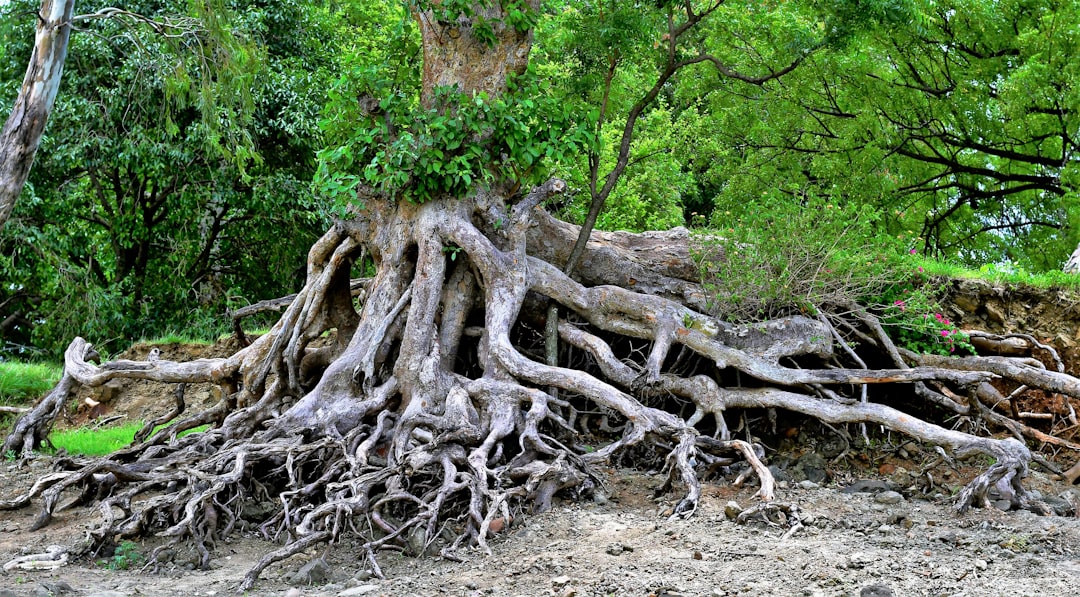The continents that form the landmasses of Earth are not merely static features; they are dynamic entities with deep geological roots that tell a story of immense time and transformation. These landmasses have been shaped by a multitude of processes over billions of years, reflecting the planet’s ever-changing nature. Understanding the deep roots of continents involves delving into the intricate interplay of geological forces that have sculpted their formation and evolution.
This exploration reveals not only the history of the Earth but also the ongoing processes that continue to shape its surface. Continental structures are the result of complex interactions between tectonic plates, volcanic activity, and erosion. Each continent has its own unique geological history, influenced by factors such as climate, ocean currents, and biological activity.
The study of these deep roots provides insights into the Earth’s past environments and helps scientists predict future changes. As researchers continue to investigate the processes that govern continental formation and recycling, they uncover the profound connections between geological activity and the planet’s ecological systems.
Key Takeaways
- Continents have deep roots that extend into the Earth’s mantle, influencing geological processes and the Earth’s surface.
- The formation of continents is a complex process involving the accumulation of continental crust over billions of years.
- Geological processes such as subduction, collision, and rifting play a key role in the recycling of continental crust.
- Subduction zones are important sites for the recycling of continental crust, where oceanic plates are forced beneath continental plates.
- Mantle plumes contribute to continental recycling by generating volcanic activity and creating new crust.
The Formation of Continents
The formation of continents is a multifaceted process that has unfolded over billions of years. Initially, the Earth was a molten mass, gradually cooling to form a solid crust. This crust was not uniform; instead, it was characterized by a patchwork of different materials and densities.
Over time, lighter materials began to rise to the surface, leading to the formation of continental crust. This process, known as differentiation, set the stage for the emergence of landmasses. As tectonic plates began to shift and collide, they contributed to the growth and fragmentation of continents.
The theory of plate tectonics explains how these massive slabs of Earth’s lithosphere move and interact with one another. When plates converge, they can create mountain ranges through processes such as folding and faulting. Conversely, when they diverge, new crust is formed as magma rises from the mantle.
This constant movement not only shapes the continents but also influences their geological features, such as valleys, plateaus, and rift zones.
The Geological Processes of Continental Recycling

Continental recycling is a fundamental aspect of Earth’s geology that ensures the continual renewal and transformation of continental crust. This process involves the subduction of older crust into the mantle, where it is subjected to extreme heat and pressure. As this material melts, it can contribute to the formation of new crust through volcanic activity or be reabsorbed into the mantle, altering the composition of Earth’s interior.
The recycling process is not uniform; it varies depending on factors such as plate interactions and geological conditions. For instance, some regions experience rapid recycling due to active tectonic boundaries, while others may retain their crust for extended periods. This variability plays a crucial role in shaping the geological landscape and influencing the distribution of resources such as minerals and fossil fuels.
Understanding these processes allows scientists to piece together the complex puzzle of Earth’s geological history.
Subduction Zones and Continental Recycling
| Subduction Zones and Continental Recycling Metrics | |
|---|---|
| Number of active subduction zones | 50 |
| Amount of oceanic crust recycled annually | ~3 billion metric tons |
| Percentage of Earth’s surface covered by subduction zones | ~60% |
| Estimated age of oldest oceanic crust | 200 million years |
Subduction zones are critical areas where continental recycling occurs most dramatically. These regions are characterized by one tectonic plate being forced beneath another, leading to intense geological activity. As an oceanic plate descends into the mantle beneath a continental plate, it creates a trench and generates significant pressure and heat.
This environment facilitates the melting of both oceanic and continental crust, resulting in volcanic activity that can give rise to mountain ranges. The impact of subduction zones extends beyond mere geological formations; they also play a vital role in the recycling of materials within the Earth. The descending plate carries sediments and water into the mantle, which can influence melting processes and contribute to magma generation.
This interaction between subduction zones and continental crust recycling is essential for understanding not only the formation of new landmasses but also the broader dynamics of Earth’s geology.
The Role of Mantle Plumes in Continental Recycling
Mantle plumes are another significant factor in the process of continental recycling. These are localized columns of hot mantle material that rise toward the Earth’s surface, often resulting in volcanic activity. When a mantle plume reaches the lithosphere, it can create hotspots that lead to the formation of volcanic islands or large igneous provinces.
The heat generated by these plumes can also influence tectonic movements and contribute to continental rifting. The interaction between mantle plumes and tectonic plates can lead to significant geological changes over time. For instance, as a plume pushes against a tectonic plate, it may cause it to fracture or uplift, leading to new continental formations or alterations in existing landmasses.
This dynamic relationship highlights how mantle plumes contribute not only to volcanic activity but also to the broader processes of continental recycling and evolution.
The Importance of Tectonic Plate Movements

Tectonic plate movements are fundamental to understanding continental recycling and geological processes on Earth. These movements are driven by convection currents in the mantle, which create forces that push and pull plates in various directions. The interactions between these plates can lead to a range of geological phenomena, including earthquakes, volcanic eruptions, and mountain building.
The significance of tectonic movements extends beyond immediate geological changes; they also influence long-term patterns in Earth’s climate and ecosystems. For example, as continents drift apart or collide, they can alter ocean currents and atmospheric circulation patterns, impacting global climate systems. Additionally, these movements can affect biodiversity by creating barriers or corridors for species migration.
Thus, tectonic plate movements are not only crucial for understanding geological processes but also for comprehending their broader implications for life on Earth.
The Recycling of Continental Crust
The recycling of continental crust is a complex process that involves both destruction and creation. As older crust is subducted into the mantle, it undergoes metamorphism and melting, contributing to new geological formations through volcanic activity. This cycle ensures that Earth’s surface remains dynamic and ever-changing, with new landmasses emerging while others are consumed.
The rate at which continental crust is recycled varies significantly across different regions. In some areas, such as active subduction zones, recycling occurs rapidly due to intense tectonic activity. In contrast, stable continental regions may retain their crust for millions of years before any significant changes occur.
This variability highlights the intricate balance between destruction and creation within Earth’s geological systems.
The Impact of Continental Recycling on Earth’s Surface
The impact of continental recycling on Earth’s surface is profound and multifaceted.
Mountain ranges formed through tectonic collisions may erode over time, while new volcanic islands emerge from mantle plumes, creating diverse ecosystems.
Moreover, continental recycling plays a crucial role in shaping Earth’s climate by influencing ocean currents and atmospheric patterns. The arrangement of continents affects how heat is distributed across the planet, impacting weather systems and climate zones. As continents drift and change shape over geological time scales, they continue to play a pivotal role in shaping both terrestrial environments and global climate dynamics.
The Connection Between Continental Recycling and Earthquakes
The connection between continental recycling and earthquakes is an essential aspect of understanding Earth’s geological processes. As tectonic plates move and interact at their boundaries, stress builds up over time until it is released in the form of seismic activity. Subduction zones are particularly prone to earthquakes due to the immense pressures generated by one plate descending beneath another.
These seismic events can have far-reaching consequences for both natural landscapes and human societies. Earthquakes can reshape topography, create new landforms, and trigger landslides or tsunamis. Additionally, they can disrupt ecosystems and pose significant risks to human infrastructure.
Understanding the relationship between continental recycling and earthquakes is crucial for assessing geological hazards and developing strategies for risk mitigation.
The Role of Continental Recycling in the Carbon Cycle
Continental recycling also plays a vital role in Earth’s carbon cycle, influencing how carbon is stored and released within geological systems. As organic materials are buried within sedimentary rocks during subduction processes, carbon can be sequestered deep within the Earth’s crust. Conversely, volcanic eruptions associated with mantle plumes can release carbon dioxide back into the atmosphere.
This interplay between subduction and volcanic activity highlights how continental recycling contributes to long-term carbon storage and climate regulation. By understanding these processes, scientists can gain insights into past climate changes and better predict future trends related to carbon emissions and global warming.
The Ongoing Process of Continental Recycling
In conclusion, continental recycling is an ongoing process that shapes not only Earth’s geology but also its ecosystems and climate systems. Through mechanisms such as subduction zones, mantle plumes, and tectonic plate movements, continents are continually transformed over geological time scales. This dynamic interplay ensures that Earth’s surface remains vibrant and diverse while influencing global patterns in climate and biodiversity.
As researchers continue to explore these complex processes, they uncover deeper insights into Earth’s history and its future trajectory. Understanding continental recycling is essential for addressing contemporary challenges such as climate change and natural disasters.
In the fascinating exploration of how continents recycle their deep roots, researchers have uncovered the dynamic processes that shape our planet’s surface over geological time scales. This topic is intricately connected to the broader study of Earth’s geological activity and its impact on the environment. For those interested in delving deeper into related scientific phenomena, an article on Freaky Science provides further insights into the mysteries of our planet. You can read more about these intriguing scientific discoveries by visiting Freaky Science.
WATCH THIS! The Earth is Trying to Swallow North America: The Unstoppable Geological Disaster
FAQs
What is the process of continent recycling?
Continent recycling is the process by which old, dense oceanic crust sinks into the mantle at subduction zones, carrying continental material with it. This process allows continents to recycle their deep roots and maintain their stability over geological time scales.
How does continent recycling affect the Earth’s surface?
Continent recycling plays a crucial role in the long-term stability and evolution of the Earth’s surface. It helps to maintain the buoyancy and stability of continents, and also influences the distribution of volcanic activity and the formation of mountain ranges.
What are the key mechanisms involved in continent recycling?
The key mechanisms involved in continent recycling include subduction, where oceanic crust sinks into the mantle, and the recycling of continental material through subduction zones. This process is driven by the movement of tectonic plates and the convective flow of the Earth’s mantle.
How does continent recycling contribute to the formation of new crust?
Continent recycling contributes to the formation of new crust through processes such as partial melting and the generation of magma. This magma can then rise to the surface and solidify, forming new crust in the form of volcanic rocks and oceanic crust.
What are the implications of continent recycling for the Earth’s geology and tectonics?
Continent recycling has significant implications for the Earth’s geology and tectonics. It influences the distribution of earthquakes and volcanic activity, the formation of mountain ranges, and the long-term stability of continents. Understanding continent recycling is crucial for understanding the dynamic processes that shape the Earth’s surface.
